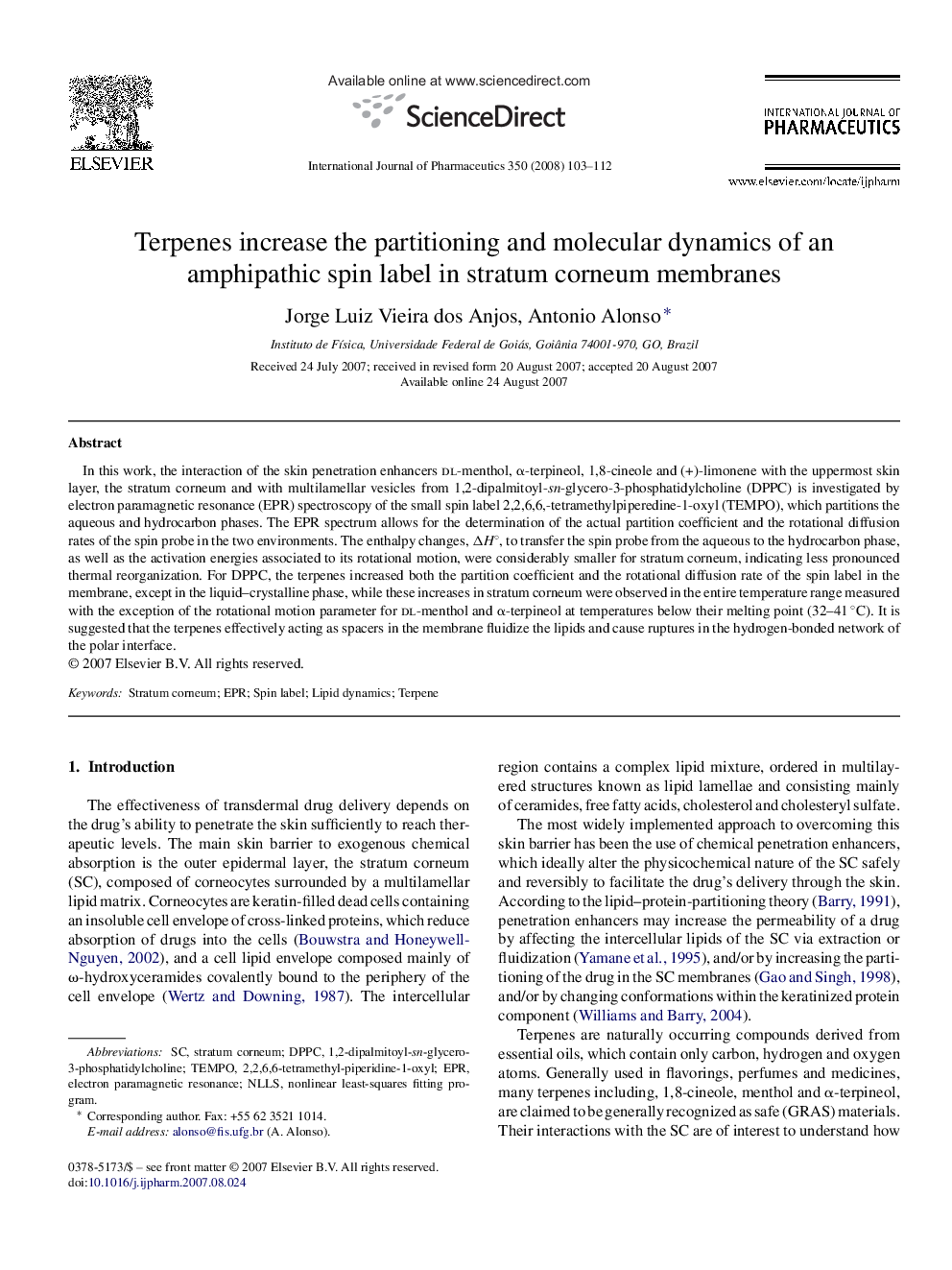| Article ID | Journal | Published Year | Pages | File Type |
|---|---|---|---|---|
| 2505703 | International Journal of Pharmaceutics | 2008 | 10 Pages |
In this work, the interaction of the skin penetration enhancers dl-menthol, α-terpineol, 1,8-cineole and (+)-limonene with the uppermost skin layer, the stratum corneum and with multilamellar vesicles from 1,2-dipalmitoyl-sn-glycero-3-phosphatidylcholine (DPPC) is investigated by electron paramagnetic resonance (EPR) spectroscopy of the small spin label 2,2,6,6,-tetramethylpiperedine-1-oxyl (TEMPO), which partitions the aqueous and hydrocarbon phases. The EPR spectrum allows for the determination of the actual partition coefficient and the rotational diffusion rates of the spin probe in the two environments. The enthalpy changes, ΔH°, to transfer the spin probe from the aqueous to the hydrocarbon phase, as well as the activation energies associated to its rotational motion, were considerably smaller for stratum corneum, indicating less pronounced thermal reorganization. For DPPC, the terpenes increased both the partition coefficient and the rotational diffusion rate of the spin label in the membrane, except in the liquid–crystalline phase, while these increases in stratum corneum were observed in the entire temperature range measured with the exception of the rotational motion parameter for dl-menthol and α-terpineol at temperatures below their melting point (32–41 °C). It is suggested that the terpenes effectively acting as spacers in the membrane fluidize the lipids and cause ruptures in the hydrogen-bonded network of the polar interface.
